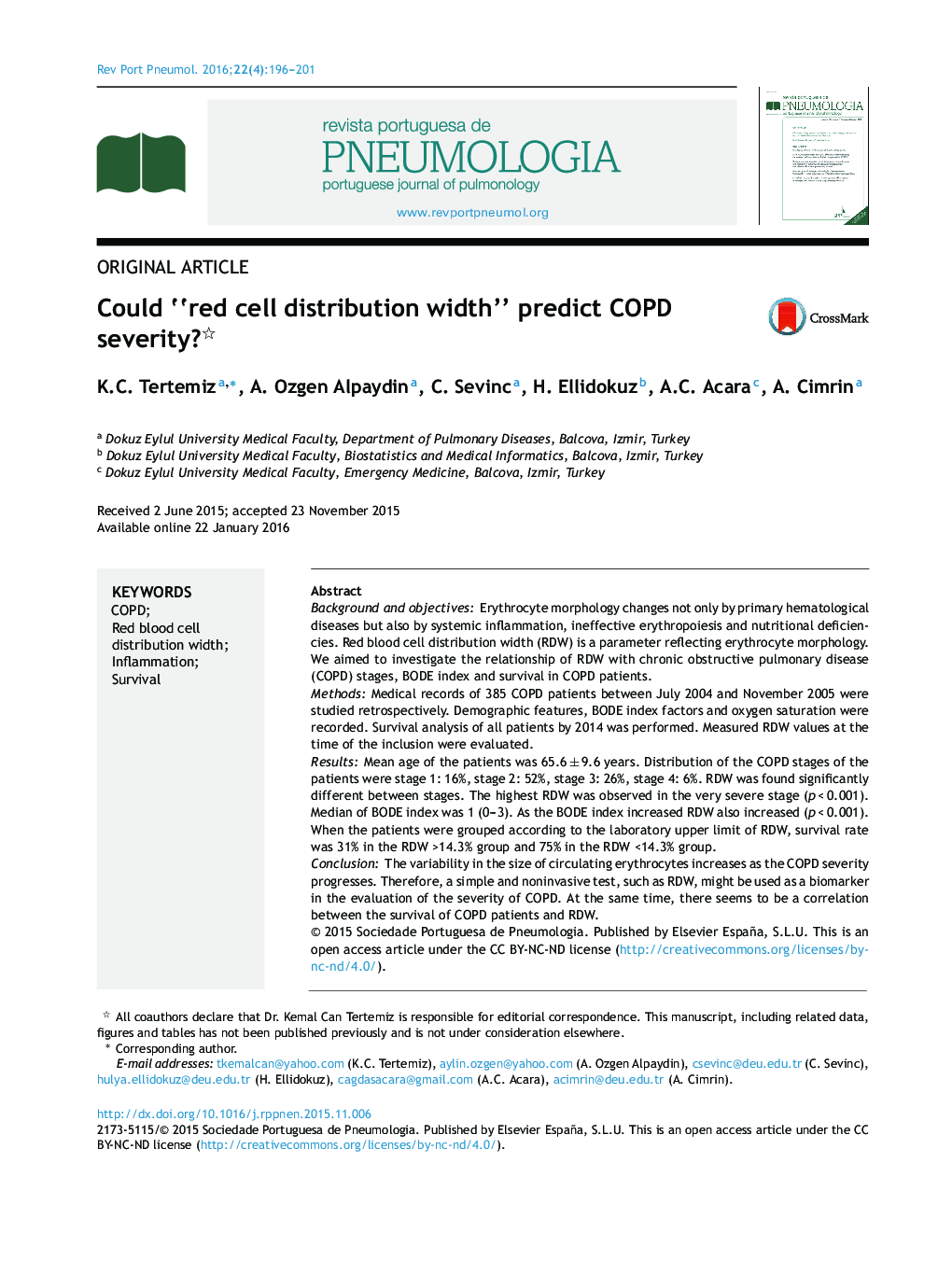| Article ID | Journal | Published Year | Pages | File Type |
|---|---|---|---|---|
| 4214568 | Revista Portuguesa de Pneumologia (English Edition) | 2016 | 6 Pages |
Background and objectivesErythrocyte morphology changes not only by primary hematological diseases but also by systemic inflammation, ineffective erythropoiesis and nutritional deficiencies. Red blood cell distribution width (RDW) is a parameter reflecting erythrocyte morphology. We aimed to investigate the relationship of RDW with chronic obstructive pulmonary disease (COPD) stages, BODE index and survival in COPD patients.MethodsMedical records of 385 COPD patients between July 2004 and November 2005 were studied retrospectively. Demographic features, BODE index factors and oxygen saturation were recorded. Survival analysis of all patients by 2014 was performed. Measured RDW values at the time of the inclusion were evaluated.ResultsMean age of the patients was 65.6 ± 9.6 years. Distribution of the COPD stages of the patients were stage 1: 16%, stage 2: 52%, stage 3: 26%, stage 4: 6%. RDW was found significantly different between stages. The highest RDW was observed in the very severe stage (p < 0.001). Median of BODE index was 1 (0–3). As the BODE index increased RDW also increased (p < 0.001). When the patients were grouped according to the laboratory upper limit of RDW, survival rate was 31% in the RDW >14.3% group and 75% in the RDW <14.3% group.ConclusionThe variability in the size of circulating erythrocytes increases as the COPD severity progresses. Therefore, a simple and noninvasive test, such as RDW, might be used as a biomarker in the evaluation of the severity of COPD. At the same time, there seems to be a correlation between the survival of COPD patients and RDW.
